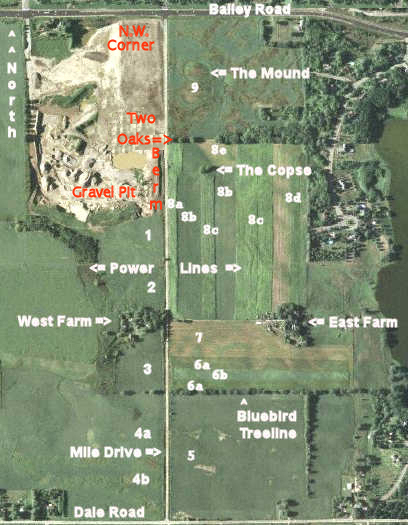
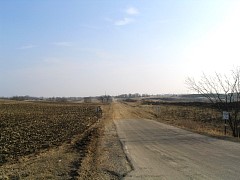
|
|
It's the end of March and the snow cover is nearly gone. It's still only in the low 40's.
|
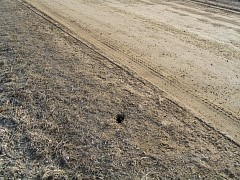
|
|
Looks like the gophers might be active - here is a gopher hole at the side of the road.
|
|
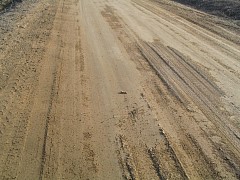
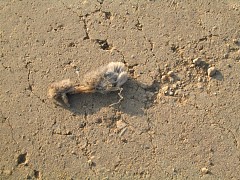
Up ahead in the road I see what turns out to be a rabbit's foot - literally. Bad luck for
the rabbit ... either a hawk or a coyote got this animal. The foot is the only body part I see.
|
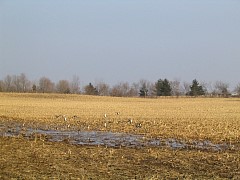
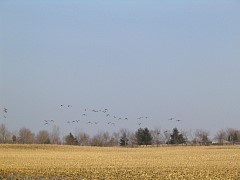
The ducks and geese are very active. Here I sneak around the corner of Bluebird Treeline and
flush green-headed mallard ducks. Enlarge the photo to see them better. There can't be food
for the ducks in this flooded portion of cornfield #5. Ducks are divided into two groups - puddle ducks and
divers. Mallards are puddle ducks - here's the proof.
|
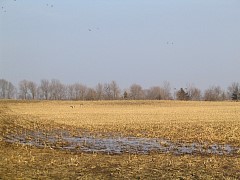
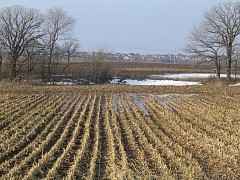
The last few stragglers decide to leave. Ducks circle in the distance. At the left is another
view of the puddle. Look close and you can see a few ducks remain behind.
|
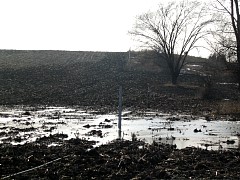
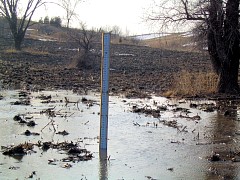
You had to know that they placed the Field #4a flood depth marker in the right spot based on
previous springs. There is only a few inches of water since the winter was so mild and
there is neither spring rain nor much snow melt.
|
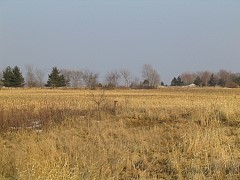
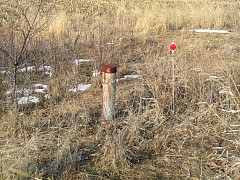
Here in another part of Field #5 is some sort of capped test well. It's probably some sort of
groundwater sample well.
|
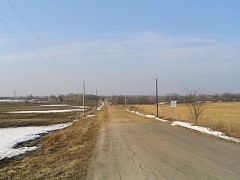
The spring view from the south end of Mile Drive looking back northward.
|
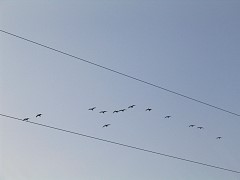
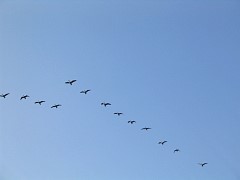
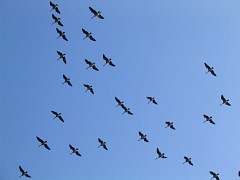
|
|
As I got back past Bluebird Treeline Canada geese (Branta canadensis L.)
appeared framed by telephone wires overhead.
It feels like winter's over.
Some migratory populations of the Canada Goose are not going as far south in the winter as
they used to. This northward range shift has been attributed to changes in farm practices
that makes waste grain more available in fall and winter, as well as changes in hunting
pressure and changes in weather.
|